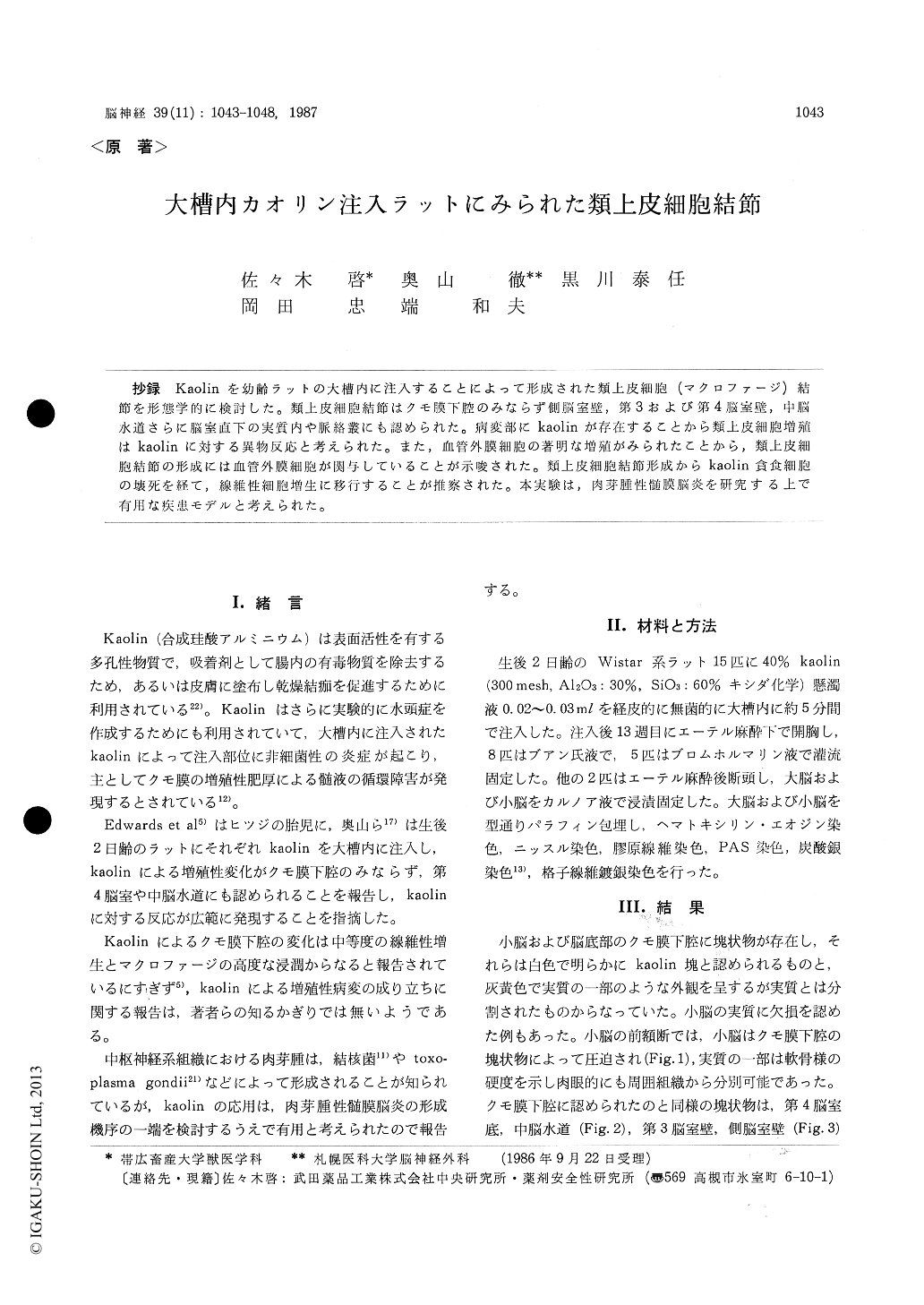Japanese
English
- 有料閲覧
- Abstract 文献概要
- 1ページ目 Look Inside
抄録 Kaolinを幼齢ラットの大槽内に注入することによって形成された類上皮細胞(マクロファージ)結節を形態学的に検討した。類上皮細胞結節はクモ膜下腔のみならず側脳室壁,第3および第4脳室壁,中脳水道さらに脳室直下の実質内や脈絡叢にも認められた。病変部にkaolinが存在することから類上皮細胞増殖はkaolinに対する異物反応と考えられた。また,血管外膜細胞の著明な増殖がみられたことから,類上皮細胞結節の形成には血管外膜細胞が関与していることが示唆された。類上皮細胞結節形成からkaolin貪食細胞の壊死を経て,線維性細胞増生に移行することが推察された。本実験は,肉芽腫性髄膜脳炎を研究する上で有用な疾患モデルと考えられた。
We studied the origin of the epithelioid cells (macrophages) observed in the rat brain in re-sponse to the intracisternal injection of kaolin.
The rats, two days of age, were used. The animals were killed after thirteen weeks following cisternal injection of kaolin. Massive epithelioid cell-nodes with multifocal necrosis were seen in the subarachnoid space of the cerebellum, in the cerebellar parenchyma and in the fourth ventricle. They were also present in the choroid plexus. The papillary epithelioid cell-nodes were observed onto the aqueduct of Sylvius, the third and lateral ventricles. These were associated with the proliferation of the adventitia of the blood vessel in the subependymal white matter. This suggested that the vascular adventitia played a role for a formation of the epithelioid cell-node in this case. The epithelioid cell was negative in silver-stained preparation. This indicated that microglia was not a source of the epithelioidcell. Reticulin fibers were moderately increased in the lesions. The epithelioid cells phagocytized kaolin granules and gave a strong PAS-positive reaction. However, it sesemed that the PAS-positive materials were not identical to the kaolin granules. A rich accumulation of apparently extra-and intracellular kaolin deposits stained metachro-matically violet with toluidine blue was seen in the necrotic areas. A large number of the dege-nerated cells containing kaolin deposits was found especially in the marginal zone of the necrotic areas. Granulation tissue with the amount of spindle-form cells and collagen fibers was also observed in the subarachnoid space. The granula-tion tissue was formed by hyperplasia of fibroblasts following the proliferation of the epithelioid cells and their necrotic processes.
This study was to develop a model of granulo-matous meningo-encephalitis.

Copyright © 1987, Igaku-Shoin Ltd. All rights reserved.


